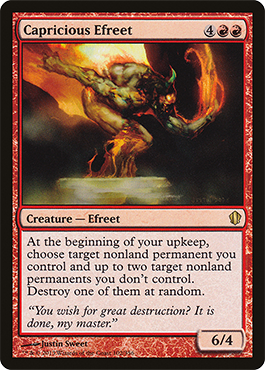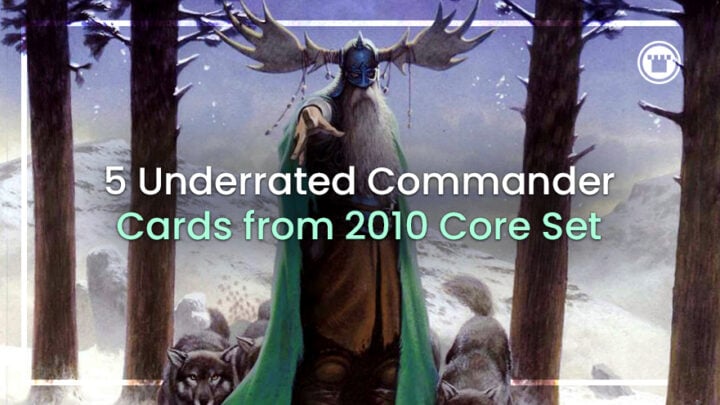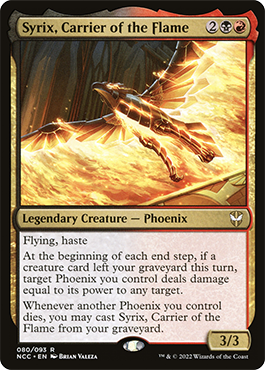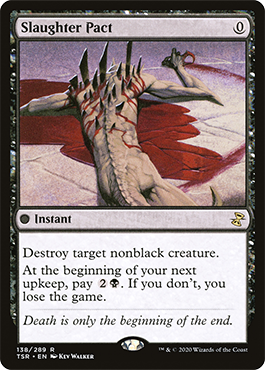People generally don’t think of Core Sets when they think of powerful cards. This is because Core Sets were intentionally designed to be an on-ramp for new Magic players. As a result, the cards are intentionally simplified. While cards can be powerful even when they don’t have that many words in the text box, it is a little bit harder for an entire set of simplified cards to have a whole bunch of bangers. Core Sets before 2009 also consisted entirely of reprints, making them even less exciting.
Magic 2010 did start to move away from this model a little bit. Not only did cards become a little more complicated than in previous Core Sets, it was also the first time a Core Set included any brand new cards. 111 of the 249 cards in the set had never been printed before.
However, apart from the set’s rare land cycle, Magic 2010 hasn’t had a significant impact on EDH. But, there are several cards in the set that you should take a look at when you’re building a Commander deck.
Xathrid Demon

Played in .007% of Black Decks on EDHRec
This demon has a very high ceiling in Commander. It has great stats for the cost of course, but the upkeep trigger is where the real power is. Like most demons, this one demands tribute. He makes you sacrifice a creature each upkeep, but he also gives you something in return. All of your opponents lose life equal to the sacrificed creature’s power.
This lets you pressure every single one of your opponents, and even gives you a shot at wiping them all out rather quickly. He slots quite nicely into sacrifice decks that like to have creatures with high power, since your deck is already built to abuse this type of effect.
Jarad is probably the best home for Xathrid Demon. Not only does Jarad have a sacrifice ability with the same effect as Xathrid Demon’s upkeep trigger, Jarad is also likely to get quite large thanks to all the creatures that will be in your graveyard. So, sacrificing it to your Xathrid Demon can end the game on the spot.
Magma Phoenix

Played in .012% of Red Decks on EDHRec
Magma Phoenix has a lot of potential for a lot of the same reasons that Xathrid Demon does. It has an effect that impacts every player. In this case, you get to do 3 to everything! Bringing it back is fairly easy too.
The Phoenix’s most obvious home is in Syrix decks. Like most Phoenixes, it can leave your graveyard, and Syrix can help your Phoenixes do even more damage.
However, Magma Phoenix also works nicely with “Sneak Attack” effects, which allow you to put a creature into play with Haste for a turn, and then sacrifice it at the end of your turn. This lets it do 3 damage with an attack, and then 3 damage to everything when it gets sacrificed. So, if you have a repeatable way to sneak it into play, things can get really silly. This makes Magma Phoenix a great card in Purphoros, Bronze-Blooded decks.
Capricious Efreet

Played in .006% of Red Decks on EDHRec
Admittedly, this one is a little janky, but effects with the word “random” in them can be pretty fun! It’s also one of the few Red cards out there that can destroy Enchantments.
Plus, you can find a variety of ways to break the symmetry here. Even though the Efreet’s effect is somewhat random, it’s still going to benefit you more often than not. That’s because you’re the one who gets to make the choices.
On a basic level, you can choose two of your opponents’ best nonland permanents and your worst one. If your deck is filled with creatures who give you value when they die, you’re going to feel really good about whatever the outcome ends up being.
It also works nicely with indestructibility. If you choose a permanent with that keyword, the Efreet can’t destroy it, even if it selects your permanent at random.
Vampire Aristocrat

Played in .004% of Black Decks on EDHRec
This is a repeatable sacrifice outlet that doesn’t cost any mana. That’s incredibly powerful in a sacrifice deck, because if you’ve got some sacrifice payoffs in play – like Korvold – you can sacrifice as many creatures as you have without spending any mana beyond the first three you spent on the Aristocrat.
Free sacrifice outlets also allow you to pull off hundreds of different infinite combos. Things get especially interesting if you combine the Aristocrat with effects that return creatures to the battlefield. For example, if you combine it with Thran Vigil and Putrid Goblin, you just get to sacrifice the Goblin as many times as you want to.
This is because the Goblin has Undying, which means that if it doesn’t have any -1/-1 counters on it when it dies, it returns to the battlefield with a -1/-1 counter. However if you have Thran Vigil in play, you get to put a +1/+1 counter on the Goblin every time it comes back. This cancels out the -1/-1 counter, meaning you can just keep sacrificing the Goblin.
It’s especially curious that Vampire Aristocrat sees so little play, since the functionally identical Nantuko Husk sees play in ten times more decks on EDHRec!
Hive Mind

Played in 0.04% of Blue Decks on EDHRec
At first glance, Hive Mind just looks like the kind of card you put in your Commander deck because it’s wacky and affects all players. It does not look like a card that is ever going to break a game wide open. But, there are actually some pretty nasty combos you can pull off with Hive Mind.
In 60-card formats, this Enchantment has been combined with the Pact cycle. The Pacts are free for you to cast, but you lose the game if you can’t pay a mana cost during your next upkeep.
If you cast a Pact with Hive Mind in play, it forces all of your opponents to cast the Pact too. Giving everyone a Slaughter Pact might sound like a pretty bad idea, but they have to deal with the card’s downside too. So, maybe your opponents just destroyed every creature you control. But it doesn’t matter. Because if they can’t pay Slaughter Pact’s upkeep cost on their next turn, they lose.
Obviously, opponents playing Black are likely to be able to pay the cost, but there’s a pretty good chance that the Hive Mind-Pact combo finishes off at least one of your opponents, and in the right match ups you might just wipe out everyone.
End Step
Those are my picks for five underrated Commander cards from Magic 2010. I hope I introduced you to a few obscure cards that will upgrade your deck! Do you think I left out any cards? Let me know on X.

Jacob has been playing Magic for the better part of 24 years, and he especially loves playing Magic’s Limited formats. He also holds a PhD in history from the University of Oklahoma. In 2015, he started his YouTube channel, “Nizzahon Magic,” where he combines his interests with many videos covering Magic’s competitive history. When he’s not playing Magic or making Magic content, he can be found teaching college-level history courses or caring for a menagerie of pets with his wife.









